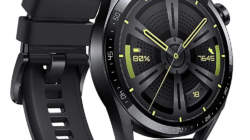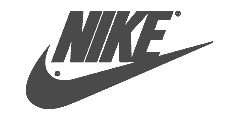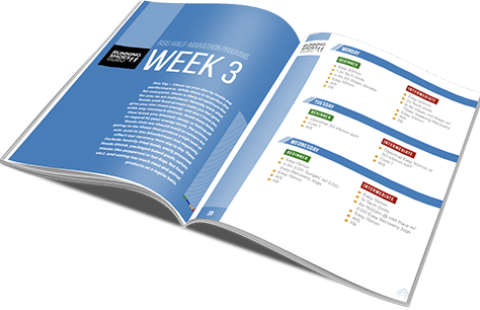Review: Suunto Ambit 3 Run HR Monitor
This expert review is written by
Henry Howard
Ultra runner and certified running coach.Now living and running in Indiana, he has completed more than a dozen marathons and is a regular age-grouper in shorter distances.
Today Deals
Quick overview
Brand
Model
List price
Battery life
Water proof
Multi sport
Music support
24h tracking
Heart monitor
Route
Pros and cons according to our running expert
Pros and cons according to our running expert
- Significant amount of data available for multiple-sport athletes
- Movescount app is pretty intuitive
- Comfortable, fits small wrists well
- Ability to sync with cell phone using Bluetooth
- 30-hour promised battery life is way off
- Inability to maintain settings correctly
- More data than some athletes need or want
- Lack of support for Android users
Our verdict
Design and Hardware Suunto Ambit 3 Run HR Monitor
The watch (weighing in at 87 grams) is well designed and the buttons are set up in a logical way so that the user can toggle around between different screens. I had no issue in the watch’s appearance or the basics of its usage.
Navigating the Interface Suunto Ambit 3 Run HR Monitor
The Suunto watch and its Movescount app were fairly easy to understand. I never had an issue in actually uploading my data to the Movescount app (though there are major issues in the data that is spit out and the fact that the watch frequently reverts to factory settings).
On the run Suunto Ambit 3 Run HR Monitor
The Suunto Ambit 3 was comfortable to wear and the GPS picked up my location quickly, whether I was at home, traveling in a major metro area or in a remote location for a trail race. It was pretty accurate, compared to other watches I have worn on similar routes, as far as distance. The data was easy to understand and it was a breeze to navigate various screens while on the run, after a brief learning curve.
After the run: software and connectivity Suunto Ambit 3 Run HR Monitor
As easy as it was to set up the Ambit to collect the data, its ability to provide the data was abysmal. First off, I had multiple issues with reliable data — it clocked me doing a 2-minute mile. Another time, as I was slowly returning to training after surgery, it recorded me doing a 5:37 mile. I can barely hit 6:00 in the peak of training. There were additional issues with the miles/kilometers settings.
Given that this is a European product, it is reasonable that the default setting is for the metric system. However, what is not reasonable is why the watch constantly reverts back to the metric system even after it has been changed to my preferred American units. This is not a debate about the metric vs. imperial measurements. Whichever setting the user prefers should remain in place, not constantly reverting back to the factory setting.
Other activities Suunto Ambit 3 Run HR Monitor
While I did not test the biking and swimming functions, the watch promises solid data and tracking for those sports as well as running. In fact, Suunto says that it can record heart rate for swimmers, even under water. It also says it will record multisport data together, a huge benefit for triathletes. It allows for changing sports mode during activities and post-workout analysis of multiple sports. Suunto says it has a daily activity tracker but the watch doesn’t actually track anything other than the aforementioned sports and hiking. A 24-hour tracker would imply it tracks sleeping, but I was not able to determine how that is done.
Accuracy and battery life Suunto Ambit 3 Run HR Monitor
I found the mileage measurements of the watch to be spot on as compared with routes I ran with other watches (as noted, the timing was very inconsistent). However, the claimed battery life is far from the truth. During my time testing the watch, I ran a 50-mile race, which took me just under 12 hours. The battery was at less than 10 percent when I finished, a far cry from the 30 hours Suunto claims.
Other interesting functions Suunto Ambit 3 Run HR Monitor
Watch performed well when I took it hiking. There were no issues with GPS tracking or distance, at least my perception of how far the actual walk was compared to the mileage readout. Additionally, the data on the Movescount app is better than other watches and apps that I have used. Among my favorite uses of data was a table that displays each lap (mile or kilometer) of the run along with all of its specific data including heart rate, distance, speed, pace, cadence and elevation change.
Alternatives Suunto Ambit 3 Run HR Monitor
The Garmin Fenix 2 and 3 most closely resemble the Suunto Ambit 3. You will generally pay more for the Garmins. They have a lot in common, including much of the benefits that are highlighted here. The Fenix has advantages when it comes to connectivity in terms of Bluetooth Smart uploading to phones, phone notifications and live tracking. The Ambit does allow users to export settings online, though since the watches can be synced to Movescount, Garmin Connect or Strava, that seems to be redundant.
Conclusion Suunto Ambit 3 Run HR Monitor
In theory, the Suunto Ambit 3 is a useful tool for triathletes and serious data geeks. It’s flexibility when it comes to various sports will help those who participate in running, biking and swimming get the most out of their workouts and races.
However, there are serious issues with the data collected as noted above. For those who focus on one sport, or prefer to keep their data simplified, there are better, lower-cost watches available that would suit them.
Price comparison:
Suunto Ambit 3 Run HR Monitor
This page contains affiliate links. As an Amazon Associate I earn from qualifying purchases.
Today Deals
Write a review
About the Suunto Ambit 3 Run HR Monitor
Your review was successfully posted.
If your review wins, you will get a notification by email.
Winner will receive Amazon gift card of $50 or equivalent in other currency.
Ask a question
About the Suunto Ambit 3 Run HR Monitor
Your question was successfully sent.
Similar watches to Suunto Ambit 3 Run HR Monitor

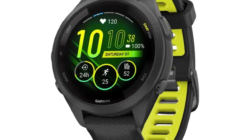
Garmin Forerunner 265

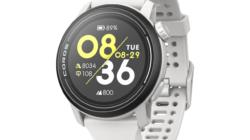
Coros Pace 3

